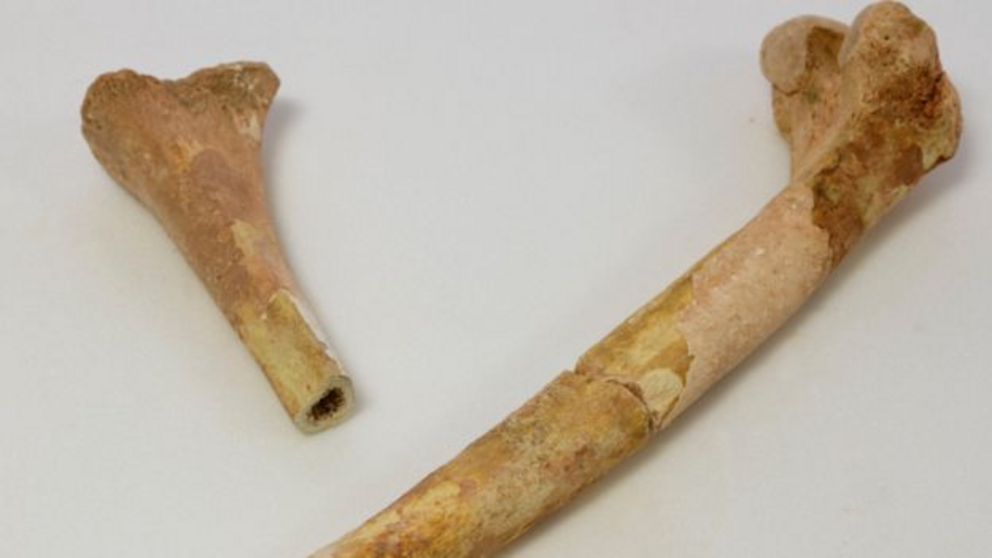Somerset human remains 'as old as Cheddar Man'
The human remains were found to be as old as Britain's oldest complete skeleton, the Cheddar Man
 The human remains were found to be as old as Britain's oldest complete skeleton, the Cheddar Man
The human remains were found to be as old as Britain's oldest complete skeleton, the Cheddar Man
Two boxes of human remains rediscovered after 55 years have been found to be as old as the Cheddar Man - Britain's oldest complete skeleton.
The bones were discovered in a cave in Cannington Park Quarry near Bridgwater, Somerset, in the 1960s.
Soon after they "disappeared", and were recently found at Somerset Heritage Centre near Taunton, Cotswold Archaeology said.
Radiocarbon dating has shown them to be more than 9,000 years old.
 Cheddar Man lived in the Somerset area 9,000 years ago and was buried in Cheddar Gorge, where his nearly complete skeleton was discovered in 1903
Cheddar Man lived in the Somerset area 9,000 years ago and was buried in Cheddar Gorge, where his nearly complete skeleton was discovered in 1903
Osteoarchaeologist Sharon Clough, of Cotswold Archaeology, said the results were "very surprising" as the bones were originally thought to be Roman and from a cemetery near to where they were discovered in 1964.
They were placed in boxes and transferred between museums, including London's Natural History Museum, before they were misplaced.
"It was a bit of a mystery, I'd assumed they had been archived with the rest of the dig from the post-Roman cemetery," Ms Clough said.
"But they'd been picked out of the rubble in the cave and weren't seen as part of the main dig so they were only mildly interesting and were archived and forgotten about."
They were eventually tracked down to Somerset before undergoing carbon dating.
Ms Clough described the remains, from at least seven individuals, as "some of the oldest known humans to inhabit this country".
 The remains, which include bones from at least seven individuals, were recovered from a newly discovered cave in 1964
The remains, which include bones from at least seven individuals, were recovered from a newly discovered cave in 1964
She said two thigh bones, from an adult and an under 18, were found to be more than 9,000 years old "which places both of the bones very clearly in the early Mesolithic".
Cheddar Man lived in the Somerset area 9,000 years ago and was buried in Cheddar Gorge, where his skeleton was discovered in 1903.
Ms Clough said Mesolithic human remains are "extremely rare discoveries" in this country.
"Cheddar man has all the bits but we only have a lot of long bones, a few cranial parts and a couple of pieces of pelvis," she said of the latest discovery.
"But it's very exciting to find human remains of this date."
She added the cave was "completely destroyed" by quarrying in the 1990s, so the bones are the "only surviving evidence for what now appears to have been a rare Mesolithic burial site".
